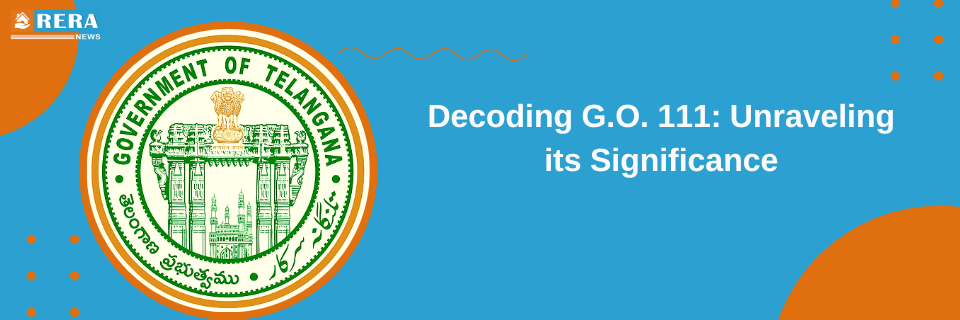
Hyderabad, a city experiencing rapid development, has witnessed significant expansion of its boundaries over the past few decades. This rapid growth has resulted in an increased demand for water resources. To meet this rising requirement, the Government of Telangana has implemented various pipeline projects, enabling the transportation of water from the Krishna, Manjeera, and Godavari rivers to Hyderabad. These initiatives aim to fulfill the city's water needs and support its continued development.
Prior to the bifurcation of Telangana, Hyderabad relied solely on natural sources for its water supply. Himayath Sagar and Osman Sagar (also known as Gandipet Cheruvu) were the primary water resources for the city. During that time, the entire water requirement of Hyderabad was met through these two sources. However, the presence of construction activities or industrial development in the vicinity posed a threat of pollution to these resources. Any contamination or adverse impact on these water bodies would directly affect the water supply and quality in Hyderabad.
To safeguard the two lakes, namely Osman Sagar and Himayat Sagar, the Government of Andhra Pradesh introduced a measure known as GO (Government Order) No. 111 in March 1996. Prior to the implementation of this order, the government established a committee to conduct a thorough survey and assessment of the situation. The committee also sought input and recommendations from the Environmental Tribunal to ensure comprehensive and informed decision-making. This initiative aimed to protect and preserve the integrity of Osman Sagar and Himayat Sagar, acknowledging their ecological significance and the need to prevent any potential harm to these lakes.
GO (Government Order) No. 111, enacted to safeguard the catchment areas responsible for diverting water to Osman Sagar and Himayat Sagar, primarily focuses on their protection. The designated catchment areas mentioned in the order are classified as Bio Conservation Zones. The GO explicitly prohibits any form of construction within a 10 km radius of both Osman Sagar and Himayat Sagar. This prohibition extends to industrial facilities, commercial establishments, restaurants, or any other structures that have the potential to pollute the water and air in the area. The objective is to maintain the pristine condition of these water bodies and preserve the ecological balance of their surroundings.
Under GO (Government Order) No. 111, residential constructions are permitted within designated residential zones in the catchment area. However, specific guidelines must be followed. In all villages within the catchment area, a minimum of 60% of the total area should be designated as open space and roads. Additionally, 90% of the land can be utilized for recreational purposes and conservation efforts. This ensures that a significant portion of the area, approximately 90%, remains dedicated to agriculture, including horticulture and floriculture, with the aim of protecting the lakes and maintaining their ecological balance. These measures prioritize sustainable land use practices while allowing for limited residential development.
Pros of this G.O
Cons of this G.O
According to Chief Minister KCR, the city's water requirements are no longer reliant on these two lakes. The government now obtains water from the Krishna and Godavari rivers. However, in 2019, due to the depletion of other reservoirs, the local government resorted to utilizing the water resources of Himayat Sagar and Osman Sagar.
Eminent environmentalist K. Purushotham Reddy points out that revoking the government's decision would pose challenges. He also references the Supreme Court's application of the "precautionary principle" in 2000, when an industrial unit requested permission to operate within a 10-kilometer radius of the catchment region. The Supreme Court denied permission in that case, emphasizing the potential harm to water bodies.
In addition to serving as sources of drinking water, both Osman Sagar and Himayat Sagar were originally constructed to provide flood control and mitigation measures. The significance of these reservoirs in managing and mitigating massive floods became evident in 2020 when Hyderabad experienced severe flooding, leading to significant losses in the city.
Reddy further emphasized the importance of preserving reservoirs such as Osman Sagar and Himayat Sagar, highlighting that failing to do so would result in a much greater impact of water on the city, potentially causing widespread devastation.
Activist and economist Lubna Sawarth contend that KCR's statement on the House floor, referring to the lakes as "redundant," is misleading.
In addition to their water-related functions, these reservoirs also contribute to the local climate by providing quality wind circulation. The presence of Mrugavani National Park between these reservoirs further acts as a heat absorption unit for the city. Experts caution that if the potential degradation of these reservoirs occurs, it could lead to the city becoming excessively hot like a furnace.
Renowned conservationist Rajendra Singh, widely recognized as the "Waterman of India," and a former water conservation advisor during ex-CM N. Chandrababu Naidu's tenure, strongly criticized KCR's decision, labeling it as the "biggest disaster for Hyderabad." Singh expressed that environmental activists are prepared to approach the Supreme Court if necessary to address the issue.
KCR admitted during the state assembly that an abrupt repeal of the order could result in "chaos." However, he stated that his government is adopting a gradual approach. The Chief Minister mentioned that the municipal administration department has been instructed to tackle the issue in phases, starting with the establishment of master plans and green zones.
The challenge lies not in the cancellation of GO 111, but rather in the subsequent actions taken after its revocation. The crucial aspect is the implementation of a special master plan by the government that guarantees the protection of lakes, prevention of pollution, and approval by the National Green Tribunal (NGT). It is recommended that the State Government adopts a comprehensive master plan that encompasses lake preservation, low-density housing, and environmentally-friendly institutions to prevent pollution and ensure the long-term well-being of the ecosystem.
© 2023 Rera News. All rights reserved.